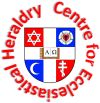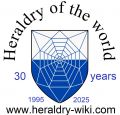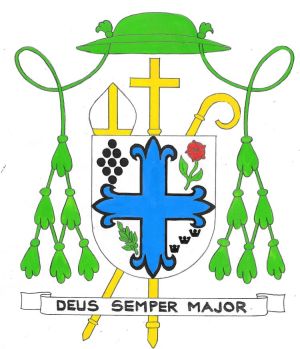Walter Theodor Jansen: Difference between revisions
Jump to navigation
Jump to search
Knorrepoes (talk | contribs) m (Text replacement - "{{media}} Literature :" to "'''Literature''': {{media}}") |
Knorrepoes (talk | contribs) m (Text replacement - "{{media}}" to " {{rel}} {{media1}}") |
||
| Line 17: | Line 17: | ||
[[Heraldic literature - Ecclesiastical heraldry|'''Literature''']]: | [[Heraldic literature - Ecclesiastical heraldry|'''Literature''']]: | ||
{{ | |||
{{rel}} | |||
{{media1}} | |||
[[Category:Roman Catholic bishops|Jansen]] | [[Category:Roman Catholic bishops|Jansen]] | ||
Revision as of 13:10, 26 December 2022
Religious or Ecclesiastical heraldry portal
This page is part of the Ecclesiastical heraldry portal |
Heraldry of the World |
|
Catholic heraldry
|
Other Christian churches Other religions
|
WALTER THEODOR JANSEN
Born : June 15, 1923
Deceased : January 29, 2004
Auxiliary bishop of Köln, 1983-1994; Titular Bishop of Barica
Official blazon
Origin/meaning
The cross is a Christian symbol and here also a symbol for St. Mary (blue is her colour, a fleur-de-lys her symbol). The rose is the symbol for St. Theresa of Lisieux, the patron saint of the parish in Lennep, where he was a priest. The three crowns are the symbol of the Three Kings and are also part of the arms of the city of Köln. The black balls refer to Neuss, the place where he was born. The leaf refers to the Friedland refugee camp, where he worked for many years.


